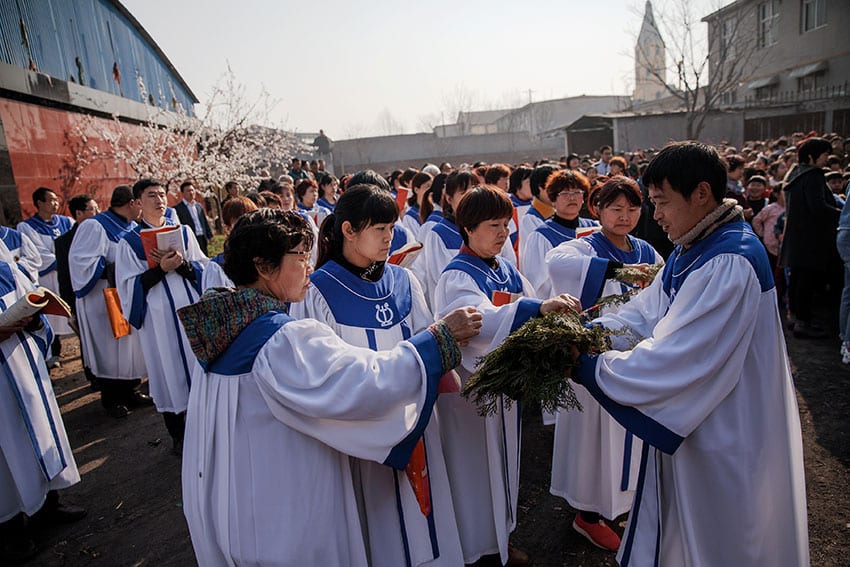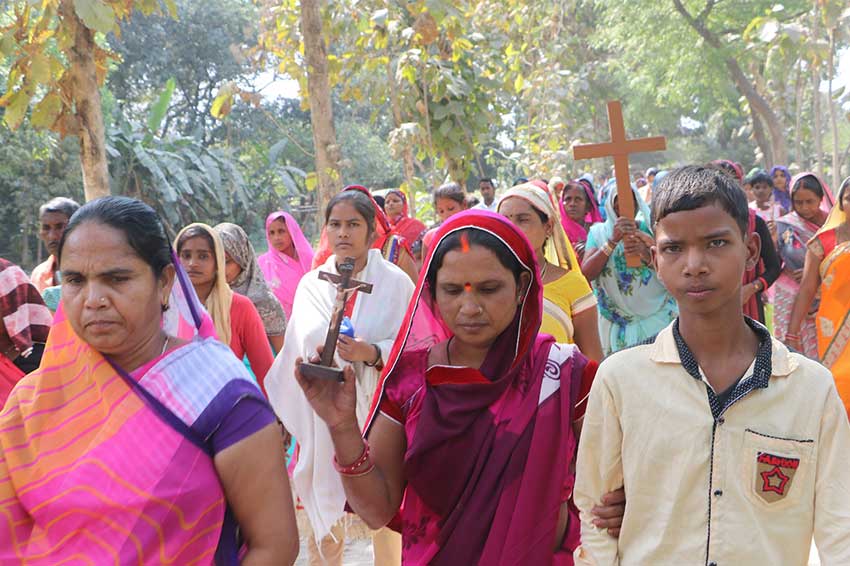
The life and affairs of the church in Europe, Latin America and Africa tend to dominate coverage of global Catholicism. However, Catholicism in Asia is no less noteworthy and will become increasingly significant for the world church, including the church in Australia, in the decades to come.
We have already seen an increasing Asian presence in our local churches, not only in our pews but also on the sanctuary.
Clergy and religious from the Philippines, India, Vietnam, Korea, and other parts of the region have arrived to form an integral part of our church in Sydney and Australia.
Indeed, the intersection of Catholicism as the world’s largest Christian religion with the Asian continent, the home of two thirds of the world’s population and growing in political, cultural and economic influence, is just one of the realities that will be acknowledged at the Alpha Asia-Pacific regional gathering taking place in Kuala Lumpur, Malaysia, next month.
With a focus on the evangelising mission of the parish, I will be privileged to be speak at and be part of the gathering, learning of the diverse and emerging forms of mission in Asia with 450 leaders from 20 countries, including clergy and lay leaders from India, Indonesia and Singapore.
Apart from the Philippines and Timor-Leste, Catholics in Asia are a religious minority—as are Christians more generally in the region.
There are an estimated 380 million Christians in Asia, representing 8 per cent of a total population of 4.5 billion.
Hence, the faith is lived out without the supports of an extensive Christian presence or substantial institutional resources, and in full contact with the major Asian religions, dominant philosophies, and their adherents, including Hindus, Muslims, Buddhists, Taoists, and Shintoists.
Nonetheless, the vibrancy of Catholic and other Christian groups in Asia remains, as seen in the Syro-Malabar and Eastern Orthodox communities. The witness and evangelical energy of these churches are well known, not only in Asia but increasingly in our own dioceses.
The lived situation of Catholics in Asia today and their outlook on evangelisation are deeply shaped by historical circumstances.
In many parts of Asia, Christianity is viewed as a product of European colonisation and therefore foreign to local culture.
The impact of the missionary endeavours of the eighteenth and nineteenth centuries looms large in this perception. Consider the British missionaries in Sri Lanka, the Portuguese and Dutch in India and Malacca, the Spanish in Philippines, the French in Vietnam, the Italians and other foreign missionaries in the history of Chinese Christianity.
However, what can be missed in the conventional affiliation of the Christian faith with western imperialism is that the Catholic and Protestant missionaries of these centuries were not always so neatly aligned with colonial administrations, or their trading partners.
For instance, the East India Company was long reluctant to admit Christian missionary organisations into their territories, on account of their tendency to upset the local social order and prevailing religious sensibilities.

The patron saint of the east, St Francis Xavier, was himself often in conflict with the Portuguese authorities over their mistreatment and exploitation of indigenous groups.
Moreover, the misperception of Christianity in Asia as a late and artificial imposition from the west overlooks the presence of the Gospel in south and central Asia at the very origins of the church, millennia prior to the rise of modern colonial empires.
As is well known, St Thomas the Apostle arrived with Jewish traders in the south of India in the first century and thousands were baptised on the Coromandel and Malabar coasts.
The faith spread east in subsequent centuries, along the old Silk Road on which Nestorians travelled.
The famous Xi’an stele attests to the arrival of the Assyrian missionary Alopen in modern-day China in the seventh century, during a period of religious toleration under the T’ang dynasty, which saw the first Christian churches built at the emperor’s expense.
The collapse of that dynasty in the tenth century led to persecution of many religious groups and the near extinction of Christianity in that region for two centuries or so.
The Christian faith would not reappear in China with any significance until the time of the Mongols.
Then there is the figure of John of Montecorvino, an Italian Franciscan of the late thirteenth century, who evangelised thousands and went on to construct Catholic churches in the heart of Beijing.
The situation of Catholics in Asia has also been shaped by rapid decolonisation that followed the Second World War, with these various independence movements leading not to secularism as has been the story in the West but to assertive forms of national religion in which ethnicity and religious identity have coalesced.
One thinks of the rise of Islamic nationalism in the region, Sinhalese Buddhist nationalism in Sri Lanka, and Hindu nationalism in India, which have placed Christian minorities under significant pressure and threat.
This is not to say that religious indifferentism and excessive individualism are not also present in Asia but the challenge of opposing religiosities with official backing is predominant in the minds of Asian Christians.
It is amidst these challenges that Catholics and other Christians demonstrate courageous witness to the Gospel in families, local networks, and worshipping communities.
As Pope John Paul II shared with the church in Asia, some 25 years after Paul VI’s landmark visit to the region, while the religious traditions of the ancient cultures of the East remain a challenge for the mission of evangelisation, the call to bring the Gospel to maturity in ways which are “fully Christian and fully Asian” remains before us.
This is because the Christian faith is not alien to these lands but an integral part of their history and indeed a vital force for their future.
